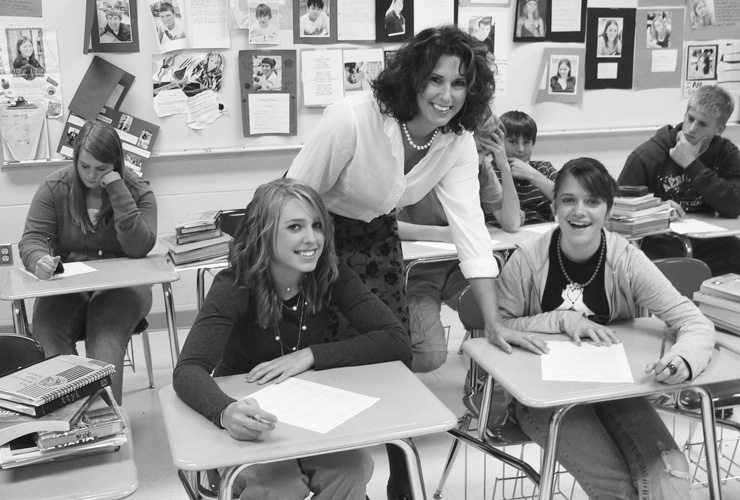Class act

Wisconsin English 9 Teacher Deena Neumann teams with Paula Gretzlock in Guidance to deliver a compelling lesson in mental illness and suicide prevention by analyzing the Shakespearean classic Romeo and Juliet. Photo courtesy of 9th Grader Benjamin Riermann.
Applying emotional perspective to literature can enrich learning and educate students about relevant mental health issues tagrating mental health education with general classroom instruction is a good thing, according to Paula Gretzlock.
“Any way to get in front of the kids in a natural setting—instead of in the guidance office with its stigma—can really make a difference,” says Gretzlock, a guidance counselor at Wisconsin’s New Richmond High School.
An example is New Richmond’s Deena Neumann, who teaches English 9, and combines a literature classic with a lesson in suicide prevention. The lesson is Shakespeare’s Romeo and Juliet. Applying a modern mental-health perspective to this Shakespearean classic reveals youth impulsivity, self-harm taken to the extreme—and potential glorification of suicide.
Through a collaboration between academics and guidance counseling, students learn much more than an English Literature class typically serves up including making the connection between depression and suicide. They also learn about:
- Depression, at-risk behaviors and suicide in this classic piece.
- How self-destructive thoughts and acts can be a continuum, and how starting down that road can lead them to unsafe places, thoughts and impulsive acts.
- Judging how serious a situation is, and when and how they should intervene. The students also explore alternate endings, changing characters’ actions and considering how this can change the outcome of the story.
Another advantage of this academic/guidance collaboration? Minimal resources, with nominal effect on budgets and staffing. The partnership also opens dialogue and breaks down stigma surrounding mental illness, allowing students to speak about perceived “off limits.”

